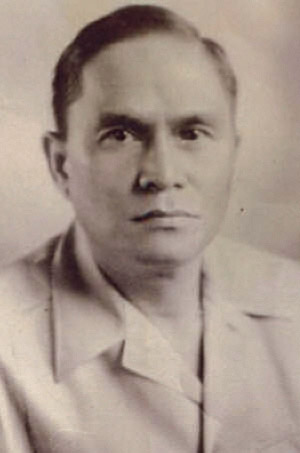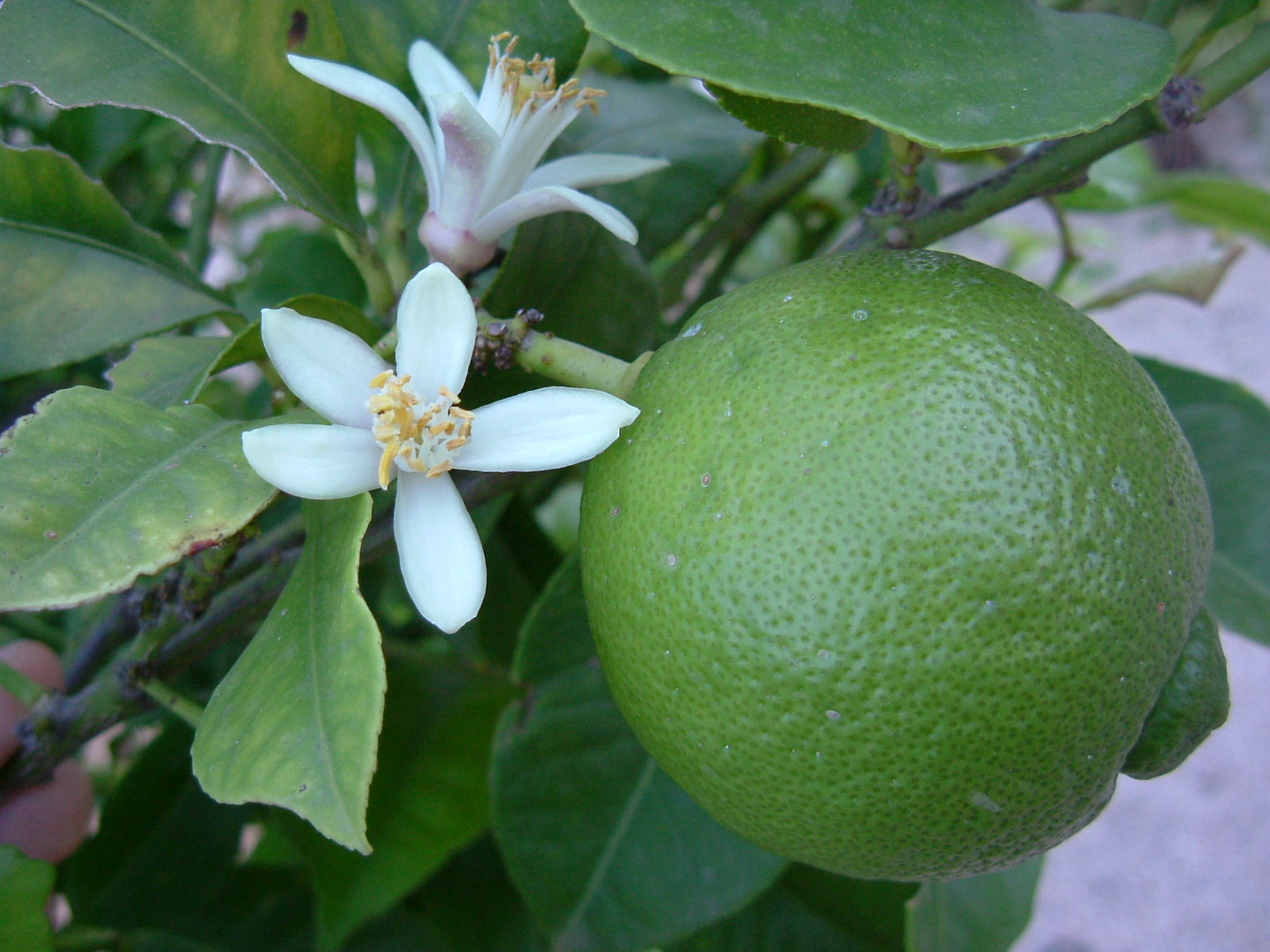|
Biasong
The micrantha is a wild citrus from the Papeda (citrus), papeda group, native to southern Philippines, particularly islands of Cebu and Bohol. Two Variety (botany), varieties are recognized: small-flowered papeda (''C. hystrix'' var. ''micrantha''), locally known as ''biasong'', and small-fruited papeda (''C. hystrix'' var. ''microcarpa'') or ''samuyao''. Long viewed as a separate species, ''C. micrantha'', it is now generally viewed to fall within ''Citrus hystrix'', but genomic data on the latter is insufficient for a definitive conclusion. A micrantha was one of the progenitor species of some varieties of lime (fruit), lime. Description The micrantha was first described to Western science in 1915 by Peter Jansen Wester, who worked for the Philippine Bureau of Agriculture at the time. Biasong Wester collected ripe fruit specimens of biasong (small-flowered papeda, ''Citrus hystrix'' var. ''micrantha'') on islands of Cebu, Bohol, Dumaguete, Negros (island), Negros, a ... [...More Info...] [...Related Items...] OR: [Wikipedia] [Google] [Baidu] |
Citrus
''Citrus'' is a genus of flowering trees and shrubs in the rue family, Rutaceae. Plants in the genus produce citrus fruits, including important crops such as oranges, lemons, grapefruits, pomelos, and limes. The genus ''Citrus'' is native to South Asia, East Asia, Southeast Asia, Melanesia, and Australia. Various citrus species have been used and domesticated by indigenous cultures in these areas since ancient times. From there its cultivation spread into Micronesia and Polynesia by the Austronesian expansion (c. 3000–1500 BCE); and to the Middle East and the Mediterranean (c. 1200 BCE) via the incense trade route, and onwards to Europe and the Americas. History Citrus plants are native to subtropical and tropical regions of Asia, Island Southeast Asia, Near Oceania, and northeastern Australia. Domestication of citrus species involved much hybridization and introgression, leaving much uncertainty about when and where domestication first happened. A genomic, phyl ... [...More Info...] [...Related Items...] OR: [Wikipedia] [Google] [Baidu] |
Papeda (citrus)
Papeda or papaeda is the common name for a group of ''Citrus'' species and varieties native to tropical Asia that are hardy and slow-growing, and produce unpalatable fruit. Walter Tennyson Swingle segregated these species into a separate subgenus, ''Papeda'', that included the Ichang lemon, yuzu, kaffir lime, kabosu, sudachi, and a number of wild and uncultivated species and hybrids. Recent genetic analysis shows the papedas to be distributed among distinct branches of the ''Citrus'' phylogenetic tree, and hence Swingle's proposed subgenus is polyphyletic and not a valid taxonomic grouping, but the term persists as a common name. Because of generally slow growth and bitter, less palatable fruits than in other citruses, papeda species have only limited commercial cultivation. Some species, like ichang papeda, are used in landscaping, while others are important for rootstocking and as genome source for breeding disease-resistant and frost-hardy citrus hybrids. In some cases t ... [...More Info...] [...Related Items...] OR: [Wikipedia] [Google] [Baidu] |
Plantae
Plants are predominantly photosynthetic eukaryotes of the kingdom Plantae. Historically, the plant kingdom encompassed all living things that were not animals, and included algae and fungi; however, all current definitions of Plantae exclude the fungi and some algae, as well as the prokaryotes (the archaea and bacteria). By one definition, plants form the clade Viridiplantae (Latin name for "green plants") which is sister of the Glaucophyta, and consists of the green algae and Embryophyta (land plants). The latter includes the flowering plants, conifers and other gymnosperms, ferns and their allies, hornworts, liverworts, and mosses. Most plants are multicellular organisms. Green plants obtain most of their energy from sunlight via photosynthesis by primary chloroplasts that are derived from endosymbiosis with cyanobacteria. Their chloroplasts contain chlorophylls a and b, which gives them their green color. Some plants are parasitic or mycotrophic and have lost ... [...More Info...] [...Related Items...] OR: [Wikipedia] [Google] [Baidu] |
Dumaguete
Dumaguete, officially the City of Dumaguete ( ceb, Dakbayan sa Dumaguete; fil, Lungsod ng Dumaguete), is a 3rd income class component city and the capital of the province of Negros Oriental, Philippines. According to the 2020 census, it has a population of 134,103 people. It is the smallest in terms of land area yet the most populous among the cities and municipalities in the province of Negros Oriental. Dumaguete is a university city, with four large universities and a number of other colleges, attracting students of the province, as well as students of surrounding provinces and cities in Visayas and Mindanao. The city is best known for Silliman University, the first Protestant and American university in the country and in Asia. There are also 18 public elementary schools and 8 public high schools. The power source of the city comes from the geothermal power plant in Palinpinon, Valencia. Scholars have been pushing for the city's inclusion in the tentative list of t ... [...More Info...] [...Related Items...] OR: [Wikipedia] [Google] [Baidu] |
Negros (island)
Negros is the fourth largest and third most populous island in the Philippines, with a total land area of . Negros is one of the many islands of the Visayas, in the central part of the country. The predominant inhabitants of the island region are mainly called '' Negrenses'' (locally ''Negrosanons''). As of 2020 census, the total population of Negros is 4,656,945 people. From May 29, 2015 to August 9, 2017, the whole island was governed as an administrative region officially named the Negros Island Region, which comprised the highly urbanized city of Bacolod and the provinces of Negros Occidental and Negros Oriental, along with its corresponding outlying islands and islets within a total regional area of . It was created on May 29, 2015 by virtue of ''Executive Order No. 183'' issued by Benigno Aquino III, who was the president at that time. On August 9, 2017, President Rodrigo Duterte signed the Executive Order No. 38 dissolving the Negros Island Region. History Precolo ... [...More Info...] [...Related Items...] OR: [Wikipedia] [Google] [Baidu] |
Zamboanga (province)
Zamboanga (also Zamboaŋga) was a province of the Philippines located in the western region of the southern island of Mindanao, Philippines. History Creation During the time of the United States' purchase of the Philippines (1898), the Republic of Zamboanga had its own independence and jurisdiction on what is now Zamboanga City. After the dissolution of the republic, Zamboanga was eventually consolidated into one major administrative area by the American government of the Philippines, consisting of an enormous region that was the Mindanao island's western peninsula, Basilan Island, and the entire Sulu archipelago, with the ancient namesake town/fort of Zamboanga as the seat of its government, and was called the Moro Province of the Philippines. The Moro Province, in 1914 was replaced by the Department of Mindanao and Sulu. It was divided into Zamboanga, Sulu, Cotabato, Davao, Agusan and Surigao. The town of Zamboanga as its capital. Luis Lim was appointed as the first go ... [...More Info...] [...Related Items...] OR: [Wikipedia] [Google] [Baidu] |
Misamis (province)
Misamis was a province of the Philippines located in Mindanao. Originally a Spanish-era district, became a chartered province on May 15, 1901 ( Philippine Commission Act 128). The province was dissolved in 1929. History Misamis takes its name from an old settlement at the mouth of the Panguil Bay once populated by Subanen, now the city of Ozamiz. Misamis is believed derived from the term kuyamis, a term for a sweet variety of coconut. However, as a result of continued raids by Moros from Lanao, the Subanens retreated into the interior and Visayan and Bukidnon settlers occupied the coast. Misamis was part of the province of Cebu until it was made into separate corregimiento in the late 18th century. By 1818, Misamis was organized as a province covering the region from Dapitan in the west, up to Gingoog in the east and as far as Cotabato and Lanao del Sur in the south. Effective control, however, was limited to the coast. For most of the 17th and 18th centuries, Misamis remai ... [...More Info...] [...Related Items...] OR: [Wikipedia] [Google] [Baidu] |
Stamen
The stamen (plural ''stamina'' or ''stamens'') is the pollen-producing reproductive organ of a flower. Collectively the stamens form the androecium., p. 10 Morphology and terminology A stamen typically consists of a stalk called the filament and an anther which contains '' microsporangia''. Most commonly anthers are two-lobed and are attached to the filament either at the base or in the middle area of the anther. The sterile tissue between the lobes is called the connective, an extension of the filament containing conducting strands. It can be seen as an extension on the dorsal side of the anther. A pollen grain develops from a microspore in the microsporangium and contains the male gametophyte. The stamens in a flower are collectively called the androecium. The androecium can consist of as few as one-half stamen (i.e. a single locule) as in ''Canna'' species or as many as 3,482 stamens which have been counted in the saguaro (''Carnegiea gigantea''). The androecium in va ... [...More Info...] [...Related Items...] OR: [Wikipedia] [Google] [Baidu] |
Mindanao
Mindanao ( ) ( Jawi: مينداناو) is the second-largest island in the Philippines, after Luzon, and seventh-most populous island in the world. Located in the southern region of the archipelago, the island is part of an island group of the same name that also includes its adjacent islands, notably the Sulu Archipelago. According to the 2020 census, Mindanao has a population of 26,252,442 people, while the entire island group has an estimated population of 27,021,036 according to the 2021 census. Mindanao is divided into six administrative regions: the Zamboanga Peninsula, Northern Mindanao, the Caraga region, the Davao region, Soccsksargen, and the autonomous region of Bangsamoro. According to the 2020 census, Davao City is the most populous city on the island, with 1,776,949 people, followed by Zamboanga City (pop. 977,234), Cagayan de Oro (pop. 728,402), General Santos (pop. 697,315), Butuan (pop. 372,910), Iligan (pop. 363,115) and Cotabato City (pop. 325, ... [...More Info...] [...Related Items...] OR: [Wikipedia] [Google] [Baidu] |
Lime (fruit)
A lime (from French ''lime'', from Arabic ''līma'', from Persian ''līmū'', "lemon") is a citrus fruit, which is typically round, green in color, in diameter, and contains acidic juice vesicles. There are several species of citrus trees whose fruits are called limes, including the Key lime (''Citrus aurantiifolia''), Persian lime, Makrut lime, and desert lime. Limes are a rich source of vitamin C, are sour, and are often used to accent the flavours of foods and beverages. They are grown year-round. Plants with fruit called "limes" have diverse genetic origins; limes do not form a monophyletic group. Plants known as "lime" The difficulty in identifying exactly which species of fruit are called lime in different parts of the English-speaking world (and the same problem applies to synonyms in other European languages) is increased by the botanical complexity of the citrus genus itself, to which the majority of limes belong. Species of this genus hybridise readily, and i ... [...More Info...] [...Related Items...] OR: [Wikipedia] [Google] [Baidu] |
Locule
A locule (plural locules) or loculus (plural loculi) (meaning "little place" in Latin) is a small cavity or compartment within an organ or part of an organism (animal, plant, or fungus). In angiosperms (flowering plants), the term ''locule'' usually refers to a chamber within an ovary (gynoecium or carpel) of the flower and fruits. Depending on the number of locules in the ovary, fruits can be classified as ''uni-locular'' (unilocular), ''bi-locular'', ''tri-locular'' or ''multi-locular''. The number of locules present in a gynoecium may be equal to or less than the number of carpels. The locules contain the ovules or seeds. The term may also refer to chambers within anthers containing pollen Pollen is a powdery substance produced by seed plants. It consists of pollen grains (highly reduced microgametophytes), which produce male gametes (sperm cells). Pollen grains have a hard coat made of sporopollenin that protects the gametop .... In Ascomycete fungi, locules are ... [...More Info...] [...Related Items...] OR: [Wikipedia] [Google] [Baidu] |



.jpg)



